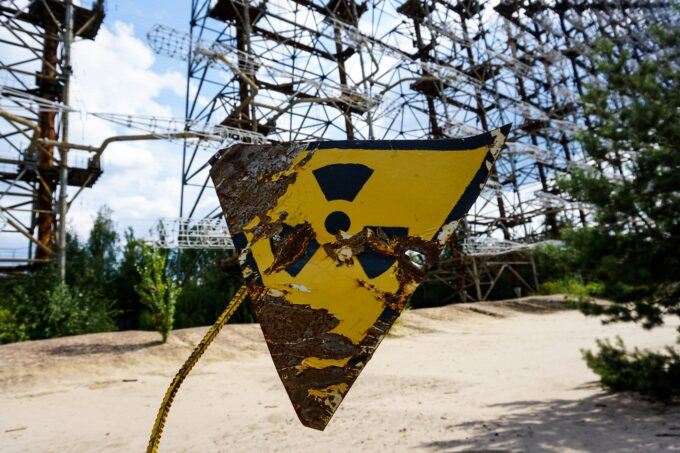
Image by Ilja Nedilko.
The Tokyo Electric Power Company, Tepco, has said that two specially designed and newly installed robots will need three years to remove 3,000 sandbags from the basements of the three destroyed nuclear reactor buildings at Fukushima-Daiichi, in Japan.
The sandbags were used in the initial, panic-driven days of the site’s triple reactor meltdowns of March 2011, when highly radioactive water gushed into the reactor basements and had to be diverted. Interesting Engineering reported that the sandbags are in areas “with lethal radiation levels” too hazardous for manual work.
The robots will be operated remotely due to the sandbags’ fierce radioactivity, because of the large bulk of the bags which weigh a total of 41 metric tonnes, and because of the chaotic wreckage inside the destroyed reactors’ basements.
The project is expected to take at least until March 2028, according to Tepco.
News reports did not specify the kind of radioactivity that contaminates the deadly sandbags, but the melted reactor No. 3 was using fuel made partially of plutonium, the most toxic material known to science, which is radioactively hazardous for 240,000 years. Deadly isotopes in addition to plutonium inside the high radiation zones too hot for humans include strontium-90, cesium-137 and -134, iodine-131, cobalt-60, carbon-14, tritium, technetium, neptunium, americium, and others.
Tepco says the deadly sandbags will be “sealed in dedicated containers” and moved to “temporary storage.” The company’s plan for long-term containment of this radioactive waste was not outlined and Tepco was not compelled by the press or the government to explain its long-term strategy.
In Tokyo, the Citizens Nuclear Information Center (CNIC) reports that the sandbags have deteriorated, and cannot be recovered with the bags intact, forcing engineers to consider pumping them out together with the basement’s stagnant water, and then enclosing it all in containers.
Waste storage systems at risk from quakes
Until at least 2027, the sandbags, in addition to tons of highly radioactive sludge produced by filtering contaminated cooling water, have to be kept in an area still at risk of flooding from potential earthquakes and tsunamis, the CNIC reported.
A March 2025 report by Japan’s Cabinet Office’s Disaster Management Working Group said that a long-predicted “mega-quake” ⸺ if it occurs, as anticipated, along the Nankai Trough off Japan’s southwest Pacific coast ⸺ would likely trigger huge tsunamis, destroy thousands of buildings, spawn mass fires, cost Japan $1.81 trillion, and potentially kill 300,000 people. Under the government report’s worst-case scenario, a magnitude-9 earthquake could see 1.23 million evacuees fleeing the area, or about 10% of its population.
The Nankai trough is where the Philippine Sea Plate is subducting under the Eurasian Plate and accumulating tectonic pressure that can snap. The magnitude 9 undersea tectonic eruption of March 11, 2011 — Japan’s worst ever recorded earthquake whose power smashed reactor foundations at Fukushima Daiichi and flooded the site with tsunami waves — moved the island of Honshu, Japan’s largest, eastward an astounding eight feet.
Japan is one of the earth’s most earthquake-prone areas, and because of Fukushima’s daily accumulation of contaminated cooling water, some 1.3 million tonnes of this highly radioactive liquid waste is held in 1,000 giant 1,000-tonne tanks near the coast. So, the sludge containers, the sandbags, and the wastewater tanks are all vulnerable to daily tremors and the dreaded mega-quake, which can potentially send much of this radioactive waste into the Pacific Ocean.
“Dirty, dangerous, and bank-busting” is so negative. Let’s call nuclear power “Clean, safe, too cheap to meter.”
The post Fukushima Radioactive Waste Problems Metastasize appeared first on CounterPunch.org.
This post was originally published on CounterPunch.org.